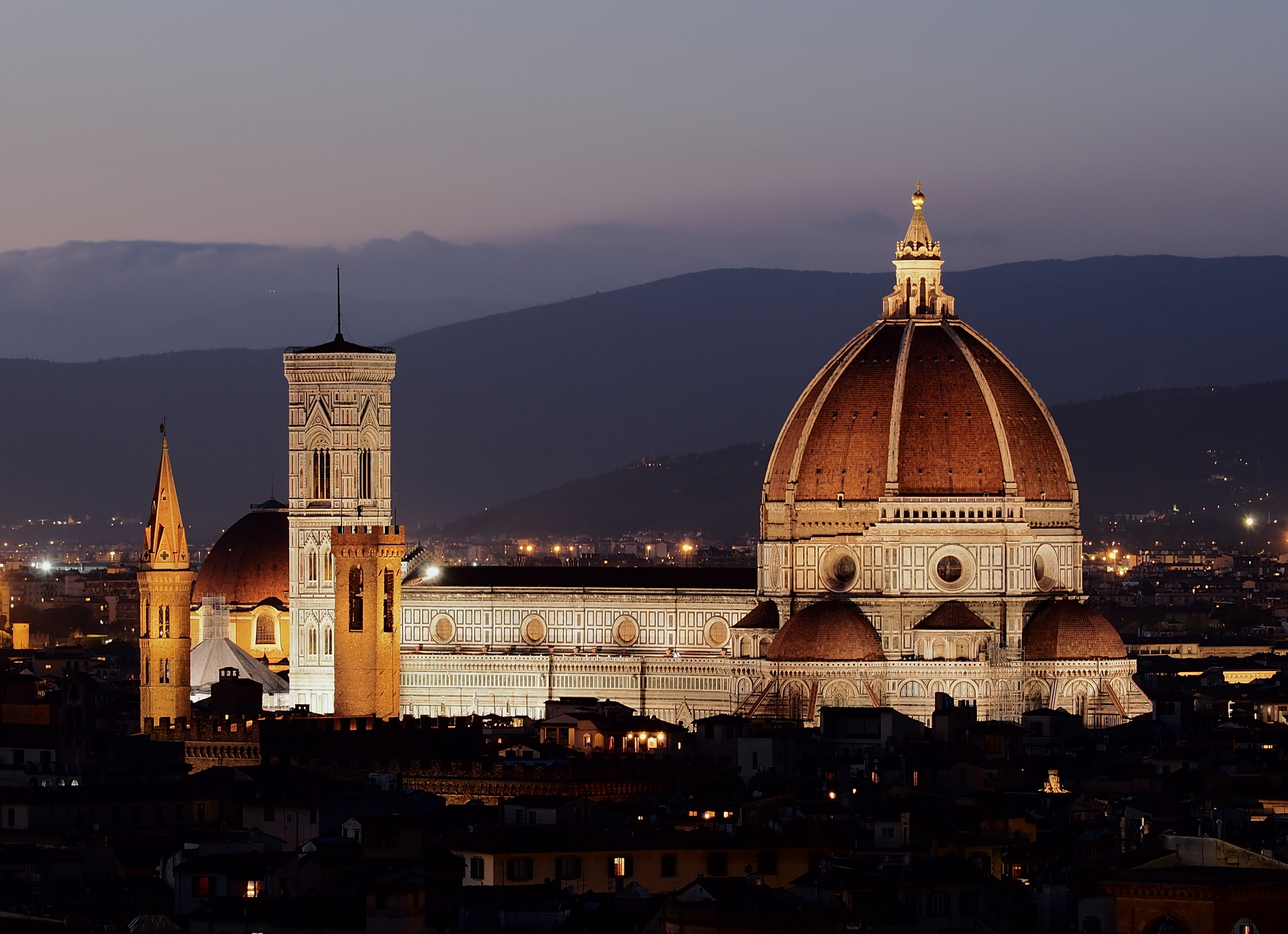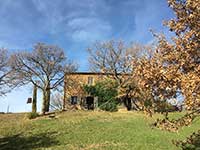1. The historic Center of Florence [since 1982] |
Built on the site of an Etruscan settlement, Florence, the symbol of the Renaissance, rose to economic and cultural pre-eminence under the Medici in the 15th and 16th centuries. Its 600 years of extraordinary artistic activity can be seen above all in the 13th-century cathedral (Santa Maria del Fiore), the Church of Santa Croce, the Uffizi and the Pitti Palace, the work of great masters such as Giotto, Brunelleschi, Botticelli and Michelangelo.[2]
|
 |
The bridges of Florence at sunset from Piazzale Michelango
|
2. Piazza dei Miracoli in Pisa [since 1987] |
Standing in a large green expanse, Piazza del Duomo houses a group of monuments known the world over. These four masterpieces of medieval architecture – the cathedral, the baptistry, the campanile (the 'Leaning Tower') and the cemetery – had a great influence on monumental art in Italy from the 11th to the 14th century.[2]
|
 |
| |
3. San Gimignano Historical Center [since 1990] |
'San Gimignano delle belle Torri' is in Tuscany, 56 km south of Florence. It served as an important relay point for pilgrims travelling to or from Rome on the Via Francigena. The patrician families who controlled the town built around 72 tower-houses (some as high as 50 m) as symbols of their wealth and power. Although only 14 have survived, San Gimignano has retained its feudal atmosphere and appearance. The town also has several masterpieces of 14th- and 15th-century Italian art.[2]
|
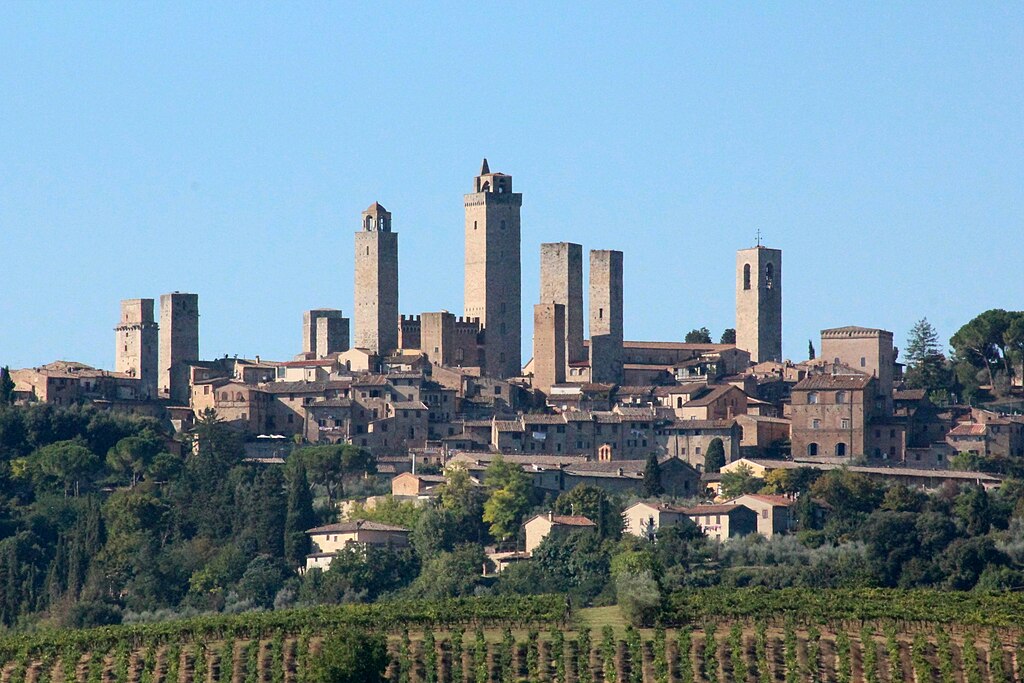 |
San Gimignano [1]
|
4. Historic Centre of Siena [since 1995] |
Siena is the embodiment of a medieval city. Its inhabitants pursued their rivalry with Florence right into the area of urban planning. Throughout the centuries, they preserved their city's Gothic appearance, acquired between the 12th and 15th centuries. During this period the work of Duccio, the Lorenzetti brothers and Simone Martini was to influence the course of Italian and, more broadly, European art. The whole city of Siena, built around the Piazza del Campo, was devised as a work of art that blends into the surrounding landscape.[2]
|
 |
The historical center of Siena [3]
|
5. Pienza [since 1996] |
It was in this Tuscan town that Renaissance town-planning concepts were first put into practice after Pope Pius II decided, in 1459, to transform the look of his birthplace. He chose the architect Bernardo Rossellino, who applied the principles of his mentor, Leon Battista Alberti. This new vision of urban space was realized in the superb square known as Piazza Pio II and the buildings around it: the Piccolomini Palace, the Borgia Palace and the cathedral with its pure Renaissance exterior and an interior in the late Gothic style of south German churches.[2]
|
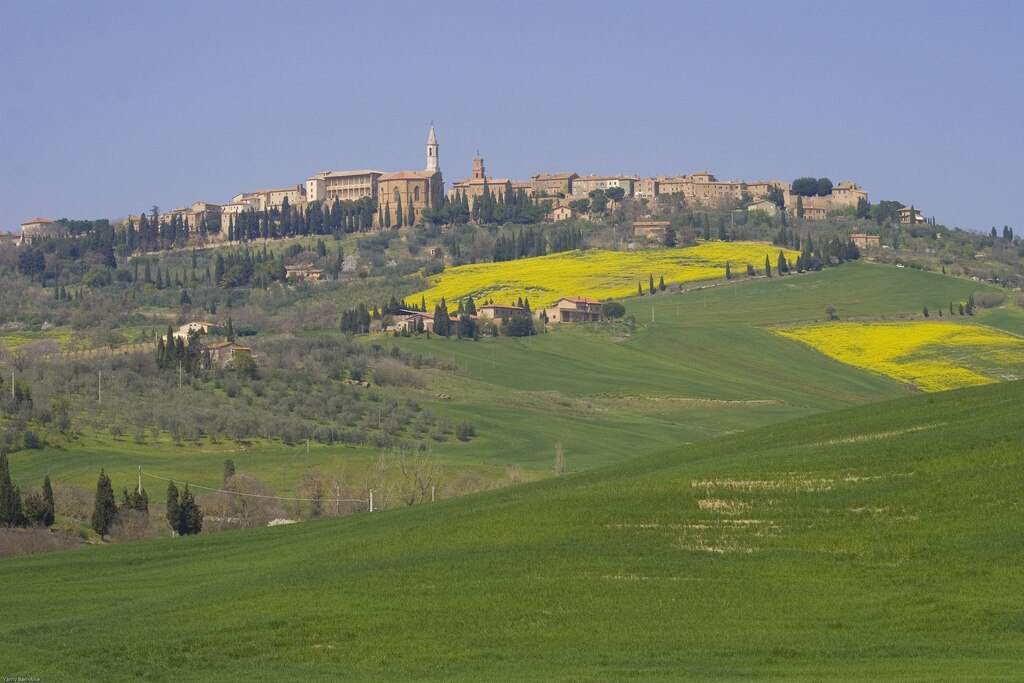 |
| Pienza [3]
|
6. Val d'Orcia [since 2004] |
The landscape of Val d’Orcia is part of the agricultural hinterland of Siena, redrawn and developed when it was integrated in the territory of the city-state in the 14th and 15th centuries to reflect an idealized model of good governance and to create an aesthetically pleasing picture. The landscape’s distinctive aesthetics, flat chalk plains out of which rise almost conical hills with fortified settlements on top, inspired many artists. Their images have come to exemplify the beauty of well-managed Renaissance agricultural landscapes. The inscription covers: an agrarian and pastoral landscape reflecting innovative land-management systems; towns and villages; farmhouses; and the Roman Via Francigena and its associated abbeys, inns, shrines, bridges, etc.[2]
|
 |
Val d’Orcia, Tuscany on the border between the Province of Siena (left) and the Province of Grosseto (right) [1]
|
|
|
 |
|
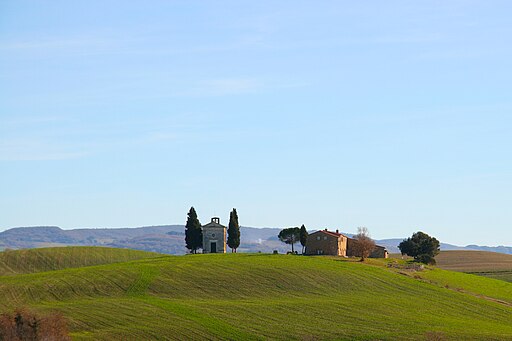 |
Val d'Orcia
|
|
Cypress trees between San Quirico d'Orcia and Montalcino |
|
San Quirico d'Orcia, Cappella della Madonna di Vitaleta
|
7. Villas and Medici gardens in Tuscany [since 2013] |
Twelve villas and two gardens spread across the Tuscan landscape make up this site which bears testimony to the influence the Medici family exerted over modern European culture through its patronage of the arts. Built between the 15th and 17th centuries, they represent an innovative system of construction in harmony with nature and dedicated to leisure, the arts and knowledge. The villas embody an innovative form and function, a new type of princely residence that differed from both the farms owned by rich Florentines of the period and from the military might of baronial castles. The Medici villas form the first example of the connection between architecture, gardens, and the environment and became an enduring reference for princely residences throughout Italy and Europe. Their gardens and integration into the natural environment helped develop the appreciation of landscape characteristic Humanism and the Renaissance.[2]
The twelve Medici villas and two pleasure gardens are Villa di Cafaggiolo, Villa del Trebbio, Villa di Careggi, Villa Medici di Fiesole, Villa di Castello, Villa di Poggio a Caiano, Villa di La Petraia, Villa di Cerreto Guidi, Palazzo di Saravezza, Villa La Magia, Villa di Artimino, Villa di Poggio Imperiale, Boboli Gardens and Pratolino Park.
|

|
Villa medicea di Poggio a Caiano
|


The property of Podere Santa Pia lies on the hills overlooking the Valle d'Ombrone, a beautiful and miraculously intact valley in Southern Tuscany. Podere Santa Pia is located in a strategic position, only a short distance from a large number of sites of historical and cultural interest. Numerous towns and villages offer a treasure trove of history and art waiting to be discovered. A wine trip provides great opportunities to taste the fantastic local cuisine, accompanied by some of the best wines in Italy. Drive through the magnificent hills of the Montecucco wineregion all the way to Montalcino, and enjoy the beauty of villages and hamlets along the way.
Podere Santa Pia is an equally good base for art lovers and for nature lovers, and it also offers a number of opportunities to discover the culinary tradition of this area of Tuscany. Internally, the house has all the charm of the traditional Tuscan farmhouse with exposed wooden beams and terracotta tiles, brick arches and authentic floors. And in the kitchen an open-fireplace and wood fired pizzaoven.
Traveling in Tuscany| Holiday homes in southern Tuscany | Podere Santa Pia
|
|
|
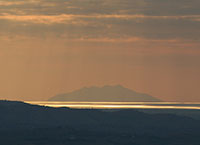 |
|
|
| Podere Santa Pia |
|
Magical views from Podere Santa Pia |
|
 Follow us on Instagram Follow us on Instagram
|

CRITERIA
USEFUL LINKS
Official website of the UNESCO World Heritage Sites in Italy | whc.unesco.org
Traveling in Tuscany | Complete list of the UNESCO World Heritage Sites in Tuscany

[1] Photo by LigaDue, licensed under the Creative Commons Attribution-Share Alike 4.0 International license.
[2] Description is available under license CC-BY-SA IGO 3.0
[3] Photo by sailko, licensed under the Creative Commons Attribution-Share Alike 2.0 Generic license.
|









